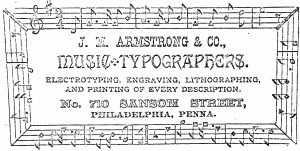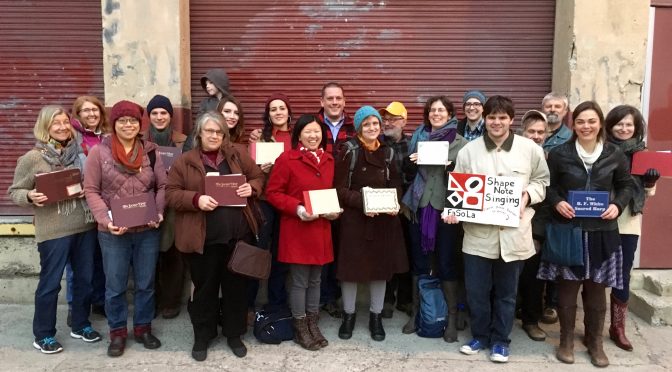The Philadelphia singers and friends gathered on Saturday, November 12th, 2016, for an afternoon of singing, learning to key, and visiting historic sites related to shape-note music publishing in Philadelphia.
12:30-3:30 Singing and Singing School
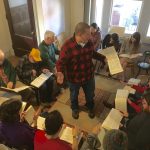
Singers often think of keying as a “mysterious art,” as Ian Quinn of New Haven writes in a 2013 article on Sacred Harp keying. However, it is not impossible to learn. There are tips and practices that can help singers learn to key or improve their keying skills.
Download Ian’s handouts and reference tunes: sh-keying-handout
Download entire lesson: ZIP file
Stream lesson:
4:00-5:30 Shape-note History Tour, 322 Market St.
John Connelly invented the commonly used four-shape shape-note system here in the 1790s and Philadelphia played a large role in shape-note printing through the 1870s. Notable publishers include the firms of T.K. & P.G. Collins, who published The Sacred Harp, and E.W. Miller, who published The Christian Harmony.
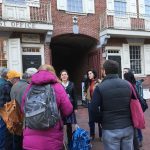
Rachel Hall of Philadelphia gave a tour of sites related to publishing shape-note music in the nineteenth century. We met at the Franklin Court archway, 322 Market St., part of an eighteenth-century structure that incorporates remnants of Ben Franklin’s print shop. The Franklin Court Printing Office frequently gives demonstrations of 18th-century printing techniques.
Mathew Carey, a former employee of Franklin’s, published Andrew Adgate’s Philadelphia Harmony, which contained early printings of some familiar Sacred Harp songs (189, 193, 222, and more). Carey’s shop, which was a few doors down from Franklin’s, was listed at 118 Market (328 Market in today’s numbering system), the location of a modern building housing Fox29 news.
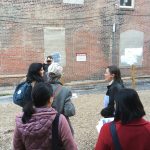
We ducked into S. Bodine St, the former Biddle’s Alley, birthplace of Tillinghast K. Collins (1802-1870), one of the publishers of The Sacred Harp. It’s just possible that his house still stands, being part of a number of small houses incorporated into a larger building.
Our next stop was the site of the northeast corner of Sixth and Minor Streets, one of the locations of the Collins’ family’s offices where The Sacred Harp was available for sale. Samuel C. Collins, Tillinghast’s son, had a bookshop there. All the buildings in the 500 block between Market and Chestnut were torn down in the 1950s to make way for Independence Mall. Collins’ shop would have been more or less where the Liberty Bell is now on display.
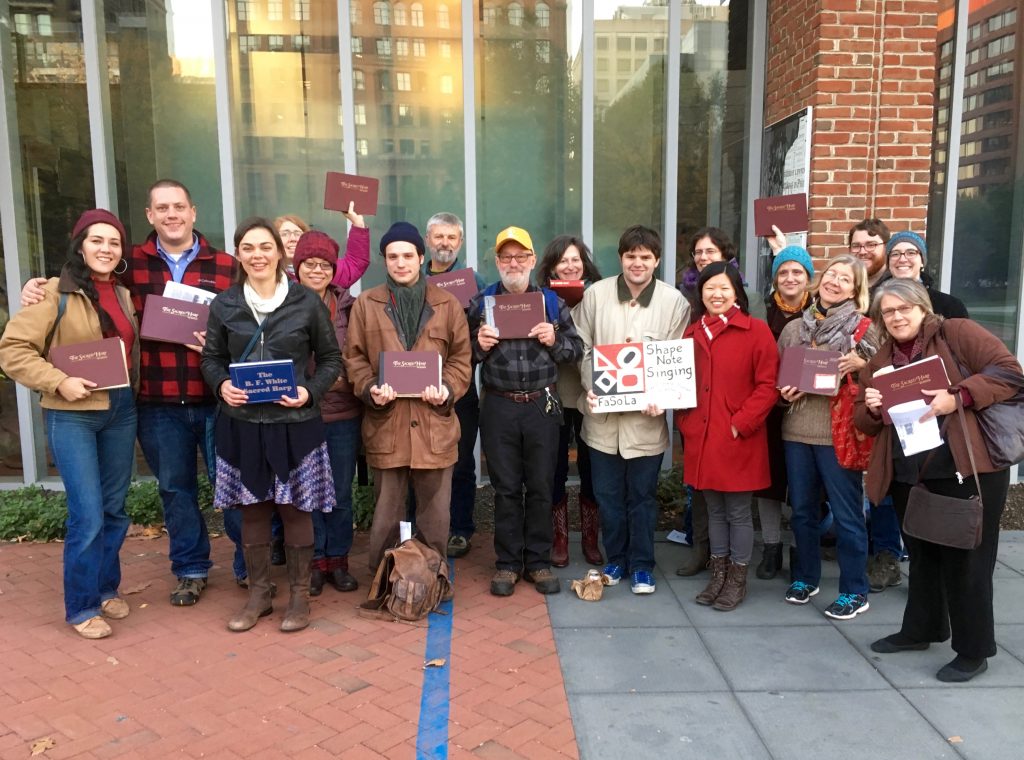
The most significant sites for shape-note publishing in Philadelphia were T.K. & P.G. Collins’ factory at 705-707 Ranstead Street and E.W. Miller’s Bible and Publishing House at 1102 & 1104 Sansom Street. Collins published The Sacred Harp, The Hesperian Harp, The Social Harp, The Sacred Melodeon, and some editions of The Southern Harmony. Miller published The Southern Harmony and The Christian Harmony. Although neither building survives, both are well documented in maps (see PhillyGeoHistory), first-hand accounts, illustrations, and even a photograph.
An 1852 issue of Godey’s Lady’s Book has a fascinating description of a visit to the Collins’ brothers’ type foundry and printing factory. The Sacred Harp was probably printed there. It’s not clear whether the typesetting was done in-house.
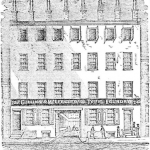
The above picture from Godey’s shows the view through the courtyard to Jayne St (now Ranstead).
At left is the front of the building, from Illustrated Philadelphia (1889).
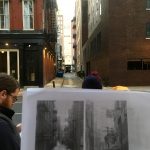
A photo of Jayne/Ranstead from Seventh Street is at the Philadelphia Free Library site. You can zoom in to see the Collins & M’Leester type foundry sign. The building on the southwest corner is the only one that survives.
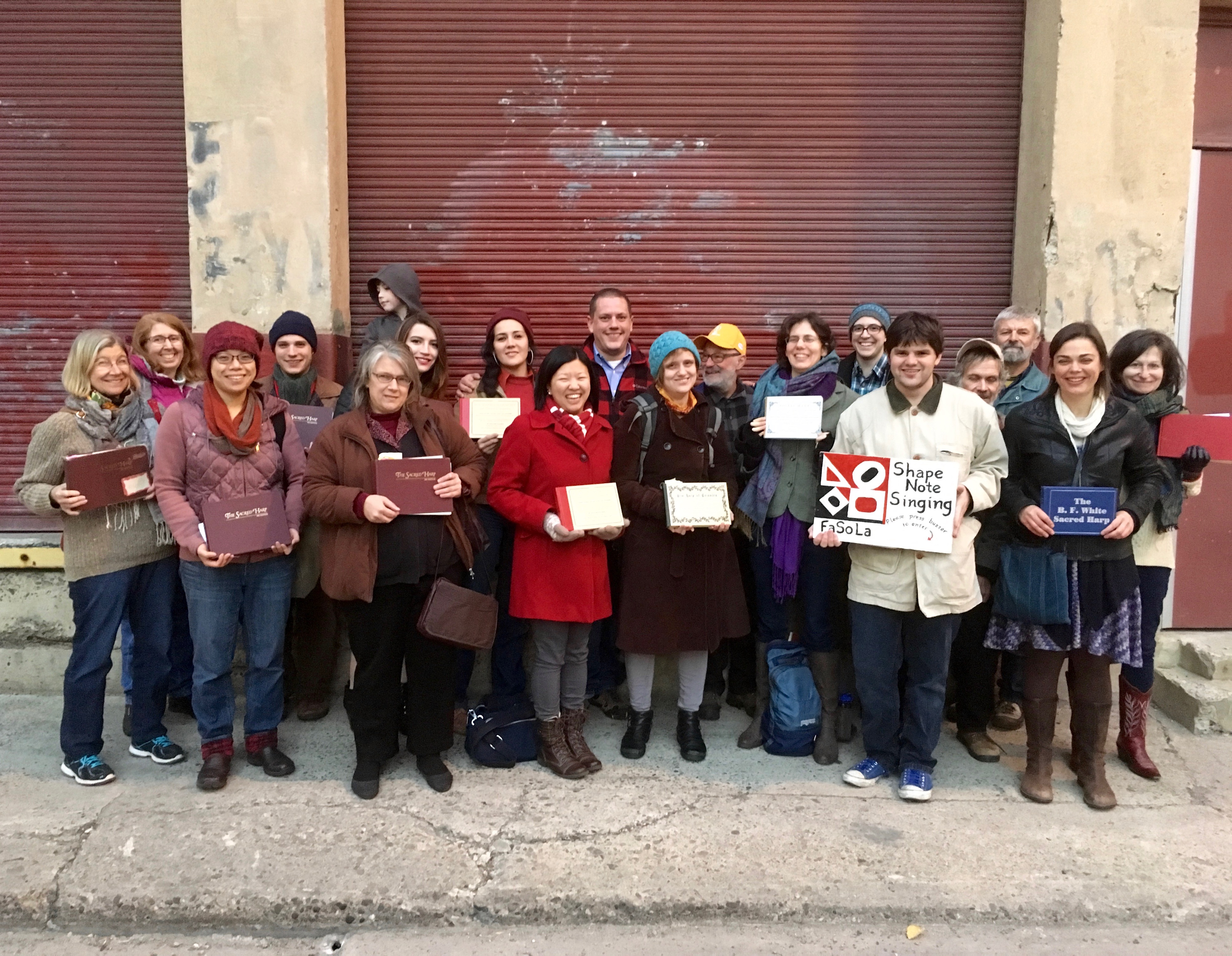
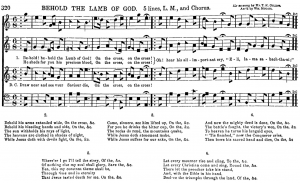
We sung the song “Behold the Lamb of God” in T.K. Collins’ honor. William Hauser arranged it for his Hesperian Harp and it was also published in William Walker’s Southern Harmony.
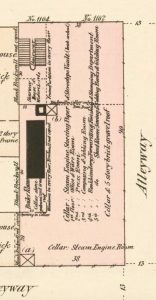
The sun was setting, so we didn’t get to see the site of Miller’s Bible and Publishing House at the top floors of the Ashmead Building at Sansom & 11th (the building is gone). There is a detailed plan and description of the factory made for insurance purposes at the Free Library’s site. William Walker’s Southern Harmony and Christian Harmony were published there.
We stopped on Jeweler’s Row to visit 710 Sansom St., the only surviving building associated with Philadelphia shape-note publishing. Ironically, it may be soon demolished. J.M. Armstrong & Co. Music Typographers set type for Ruebush-Kieffer of Virginia and other shape note publications. It’s possible that Armstrong set some (all?) of the earlier shape note books for Collins and/or Miller. Here is a description of how music type was set. This process, known as mosaic typography, was used for shape note books published in Philadelphia.
